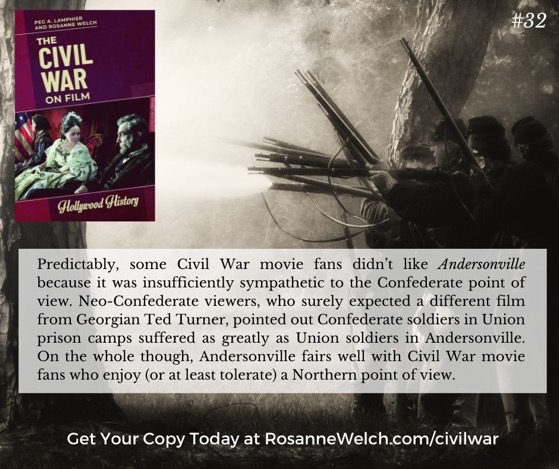Predictably, some Civil War movie fans didn’t like Andersonville because it was insufficiently sympathetic to the Confederate point of view. Neo-Confederate viewers, who surely expected a different film from Georgian Ted Turner, pointed out Confederate soldiers in Union prison camps suffered as greatly as Union soldiers in Andersonville. On the whole though, Andersonville fairs well with Civil War movie fans who enjoy (or at least tolerate) a Northern point of view.
Movies profiled in this book:









